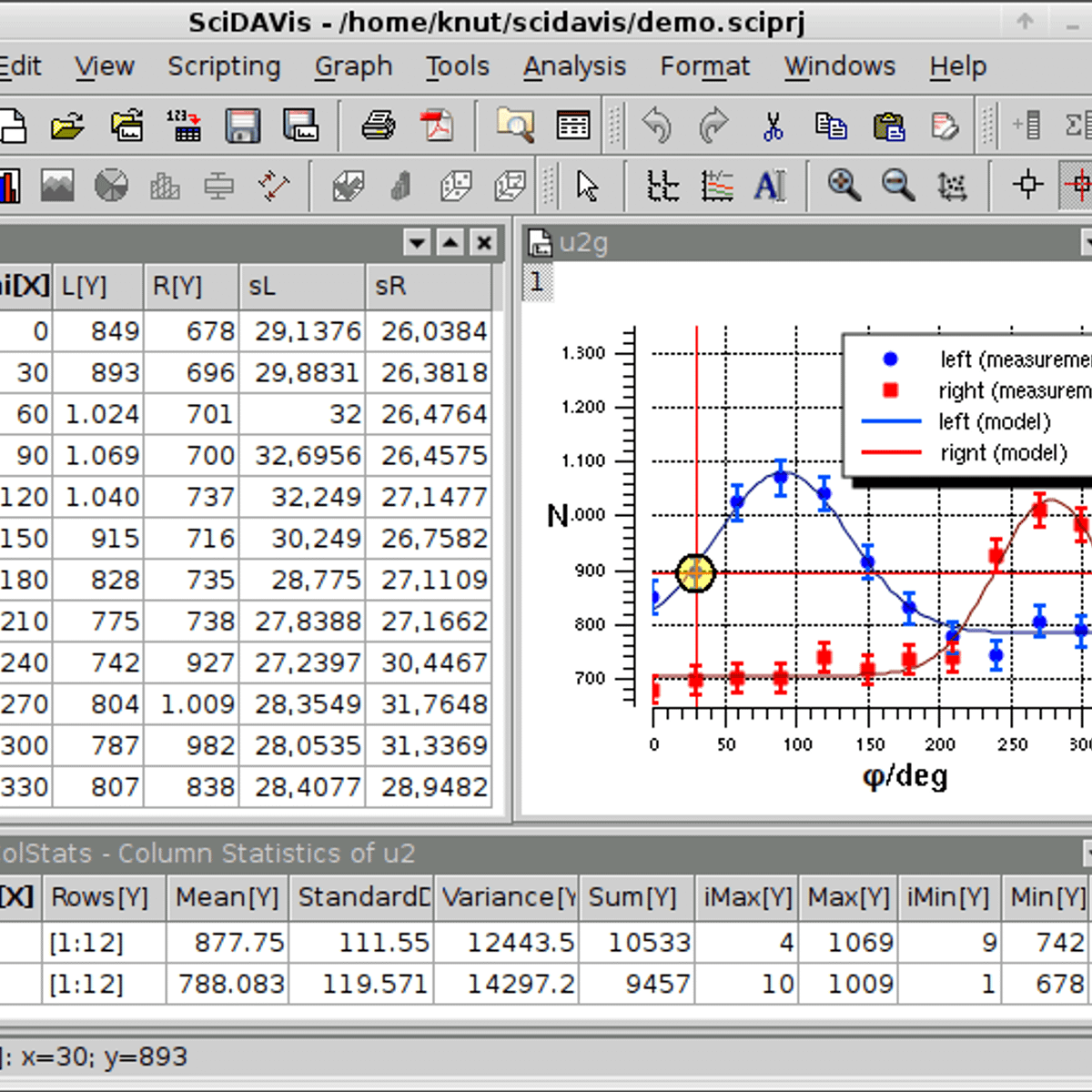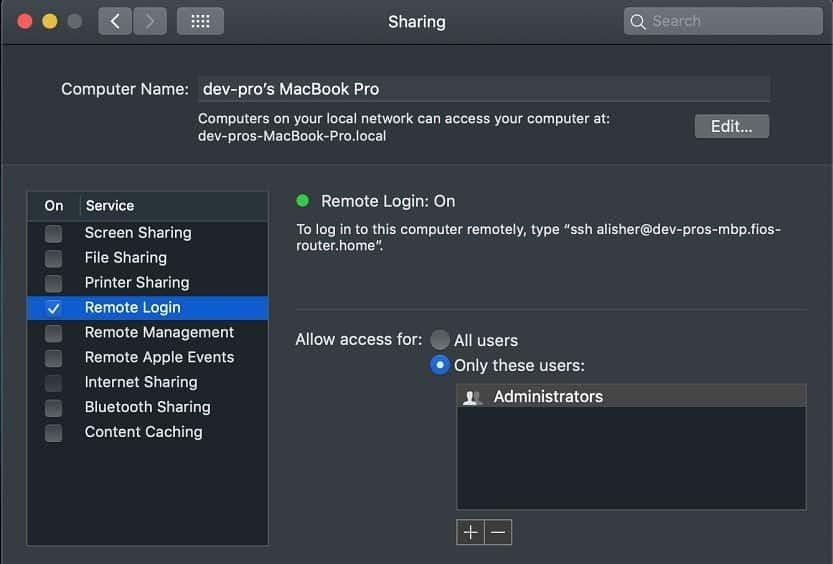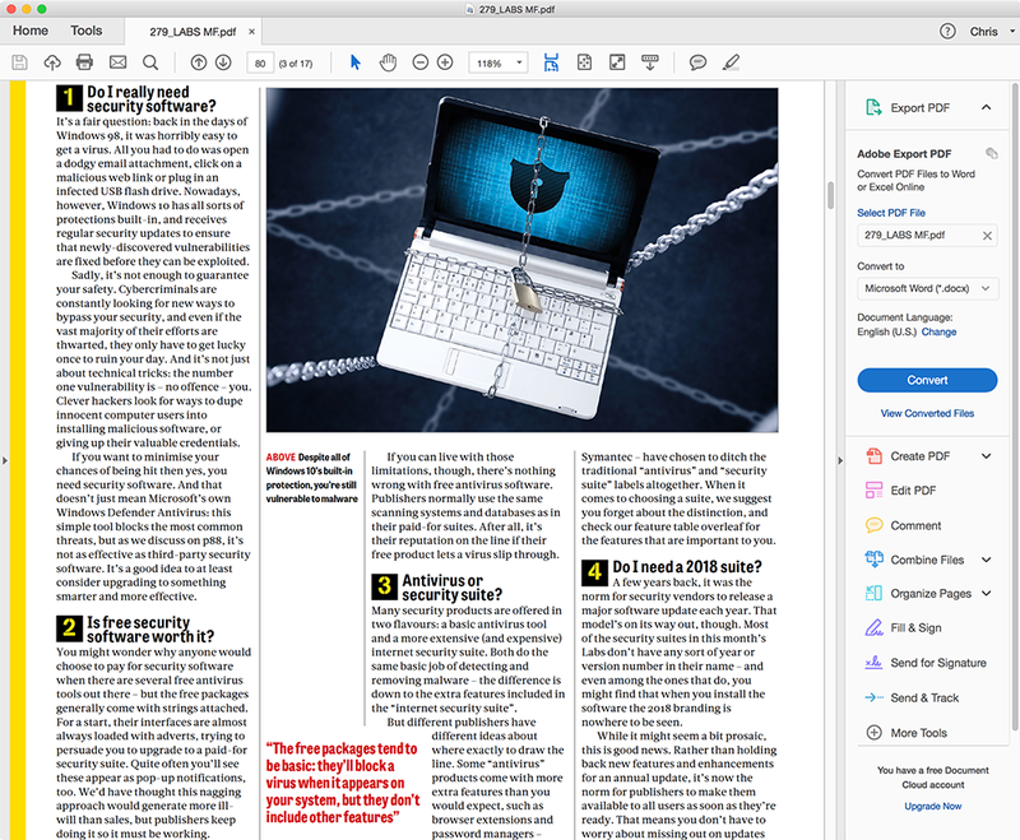
Apple Remote Desktop gives you the complete tools you need to control all the Mac computers in your network right from your own computer. You can even save task settings as templates and apply them in the future, or use one of more than 30 included sample scripts.

Mac Management is the process of monitoring and managing Mac users and computers within a network remotely, from a central location. Professionals across the globe prefer using Mac computers and the market share of MacOS has gone up from 7% in 2014 to 12% in 2019 and is increasing steadily. Mac Device Management Configuration Profiles. We use Apple configuration profiles to streamline the Mac computer configuration process by allowing you to securely and remotely deploy settings directly from the Dashboard to Mac Device Management enrolled devices. Configuration profiles have a.mobileconfig extension and are XML files containing payloads, payloads manage specific settings on. . Remote Management IP Address - This is the address you will use when accessing your router via a remote device. This function is disabled when the IP address is set to the default value of 0.0.0.0. To enable this function, change 0.0.0.0 to a valid IP address.
Save yourself the legwork. Apple Remote Desktop gives you more than a dozen commands you can use to control your remote systems easily. You can shut down all systems simultaneously, put to sleep, wake up, or restart any or all computers—all without leaving your desk.

SolarWinds N-Central (FREE TRIAL) N-Central is an acquisition of SolarWinds. The new owner added.
You also have the ability to remotely designate the startup disk for your client Mac computers. Set any number of computers to start up from a NetBoot image or their local hard drives. You'll find this to be an indispensable feature if you are in charge of a computer lab or cluster-computing environment where startup disks are often changed.
And for minimum disruption, you have the ability to schedule any of your admin tasks. All you have to do is save the settings for future deployment and Apple Remote Desktop will initiate the process at the scheduled time.
Apple Remote Desktop also gives you the power to execute UNIX shell scripts or commands on your remote client systems. You can view either a summary or the complete results of the command's output. This lets you script many standard functions built into UNIX systems or third-party tools. You can also take advantage of the command-line interfaces included in OS X.
These prepopulated UNIX commands are available via the Send UNIX Task Template:
- List All Network Services
- Set Manual IP
- Set DHCP IP
- Set BOOTP
- Set Manual IP with DHCP
Router - Set DNS Servers
- Set Search Domains
- Set Web Proxy
- Allow Power Button to Sleep
- Bonjour Name
- Current Date
- Current Time
- Time Zone
- Network Time
- Network Time Server
- Remote Apple Events
- Remote Login (SSH)
- Restart After Freeze
- Restart After Power Failure
- System Sleep Time
- Display Sleep Time
- Hard Disk Sleep Time
- Delay After Power Failure
- Wake On Modem Activity
- Wake On Network Access
- Quit Application
- Volume On
- Volume Off
- List Required Software Updates
- Download Required Software Updates
- Repair Disk Permissions
- Computer Uptime
- Free Swap Space
In the past three blogs you have seen how to change a user preference, how to change the background and how to change a system preference by changing the logon window text. In this blog I want to show you that you are also able to enable remote administration, including VNC access and that you are able to manage or add users to a remote Mac OS X device. This can be handy if you need to manage a lot of Mac devices and if you do not want to configure them by hand. Let's see how this works, again the Mac community was very helpful in explaining how to for instance create a user via Shell Script.
After trying to manage the com.apple.remotemanagement.plist file located in /library/Preferences I searched for an alternative option to enable remote management and remote control via VNC. An alternative was found in Kickstart, located in a well hidden place /System/Library/CoreServices/RemoteManagement/ARDAgent.app/Contents/Resources/ . With this command line utility you are able to configure the remote management preferences. So this is a great tool to misuse (again 😉 ) in for instance the Discovery Script of a Configuration Item.
It is compatible with macOS X 10.12, 10.13, 10.14 and 10.15 Catalina. 5 Best Adobe Reader for Mac Alternative 1. PDFelementis a smart application for iMac, MacBook Pro and MacBook Air to read PDF files, draw attention to PDF content, change text, edit pages, and fill out PDF forms.

Apple Remote Desktop gives you the complete tools you need to control all the Mac computers in your network right from your own computer. You can even save task settings as templates and apply them in the future, or use one of more than 30 included sample scripts.
Mac Management is the process of monitoring and managing Mac users and computers within a network remotely, from a central location. Professionals across the globe prefer using Mac computers and the market share of MacOS has gone up from 7% in 2014 to 12% in 2019 and is increasing steadily. Mac Device Management Configuration Profiles. We use Apple configuration profiles to streamline the Mac computer configuration process by allowing you to securely and remotely deploy settings directly from the Dashboard to Mac Device Management enrolled devices. Configuration profiles have a.mobileconfig extension and are XML files containing payloads, payloads manage specific settings on. . Remote Management IP Address - This is the address you will use when accessing your router via a remote device. This function is disabled when the IP address is set to the default value of 0.0.0.0. To enable this function, change 0.0.0.0 to a valid IP address.
Save yourself the legwork. Apple Remote Desktop gives you more than a dozen commands you can use to control your remote systems easily. You can shut down all systems simultaneously, put to sleep, wake up, or restart any or all computers—all without leaving your desk.
SolarWinds N-Central (FREE TRIAL) N-Central is an acquisition of SolarWinds. The new owner added.
You also have the ability to remotely designate the startup disk for your client Mac computers. Set any number of computers to start up from a NetBoot image or their local hard drives. You'll find this to be an indispensable feature if you are in charge of a computer lab or cluster-computing environment where startup disks are often changed.
And for minimum disruption, you have the ability to schedule any of your admin tasks. All you have to do is save the settings for future deployment and Apple Remote Desktop will initiate the process at the scheduled time.
Apple Remote Desktop also gives you the power to execute UNIX shell scripts or commands on your remote client systems. You can view either a summary or the complete results of the command's output. This lets you script many standard functions built into UNIX systems or third-party tools. You can also take advantage of the command-line interfaces included in OS X.
These prepopulated UNIX commands are available via the Send UNIX Task Template:
- List All Network Services
- Set Manual IP
- Set DHCP IP
- Set BOOTP
- Set Manual IP with DHCP
Router - Set DNS Servers
- Set Search Domains
- Set Web Proxy
- Allow Power Button to Sleep
- Bonjour Name
- Current Date
- Current Time
- Time Zone
- Network Time
- Network Time Server
- Remote Apple Events
- Remote Login (SSH)
- Restart After Freeze
- Restart After Power Failure
- System Sleep Time
- Display Sleep Time
- Hard Disk Sleep Time
- Delay After Power Failure
- Wake On Modem Activity
- Wake On Network Access
- Quit Application
- Volume On
- Volume Off
- List Required Software Updates
- Download Required Software Updates
- Repair Disk Permissions
- Computer Uptime
- Free Swap Space
In the past three blogs you have seen how to change a user preference, how to change the background and how to change a system preference by changing the logon window text. In this blog I want to show you that you are also able to enable remote administration, including VNC access and that you are able to manage or add users to a remote Mac OS X device. This can be handy if you need to manage a lot of Mac devices and if you do not want to configure them by hand. Let's see how this works, again the Mac community was very helpful in explaining how to for instance create a user via Shell Script.
After trying to manage the com.apple.remotemanagement.plist file located in /library/Preferences I searched for an alternative option to enable remote management and remote control via VNC. An alternative was found in Kickstart, located in a well hidden place /System/Library/CoreServices/RemoteManagement/ARDAgent.app/Contents/Resources/ . With this command line utility you are able to configure the remote management preferences. So this is a great tool to misuse (again 😉 ) in for instance the Discovery Script of a Configuration Item.
It is compatible with macOS X 10.12, 10.13, 10.14 and 10.15 Catalina. 5 Best Adobe Reader for Mac Alternative 1. PDFelementis a smart application for iMac, MacBook Pro and MacBook Air to read PDF files, draw attention to PDF content, change text, edit pages, and fill out PDF forms. This article will also tell you how to read and edit with the best Adobe Reader for Mac alternative.
Enable and Configure Remote Management and VNC Access
When running the command line manually you see that the command report back if remote management has been activated correctly or not, so if we configure the compliance rule check if the reported results contains 'Activated'.
Now that we have configured Remote Management we also want to create an administrative user that can be used to remotely control and manage the Mac OS X device. Let's say we want to create a user called remoteadmin. First we need to first create a discovery script that checks if there is a folder called remoteadmin exists in the /users/ folder. If so the user is already in place and nothing needs to be done, if the user is not in place we need to create the user by remediating it via the remediation script.
In the fourth line of the script we starting Sudo in Super User mode (sudo –su), to be able to run Sudo in this mode we need to supply a password which we temporary parsed to a file called pwd.txt. This can be every accessible folder on the Mac OS X device. With the Directory Service command line utility we are able to create a user with the appropriate permissions and settings. In this example we will use the super-secret password P@ssw0rd. 😉
Create a user with the Directory Services command line utility
If you want to use the script above be sure to change the location in line #2 and the Super User password (P@ssw0rd) in line #3. Carbon cloner for mac os x.
Adding both Configuration Items to a Configuration Baseline and deploying it to a collection with Mac devices will result in the fact that a user remoteadmin is created and that Remote Management is enabled. In the Mac OS X device you are able to see if Remote Management and VNC access are configured.
Apple Remote Desktop From Windows
Logitech t631 touch mouse for mac mouse. Remote Management is enabled and configured
Now that Remote Management is configured you need to check if the remoteadmin user is created, this can also be done in the preferences.
What Is Remote Management For Mac Os
If you want to try this baseline, you can download it here. Be sure to test it first in a lab environment before using it in production.
